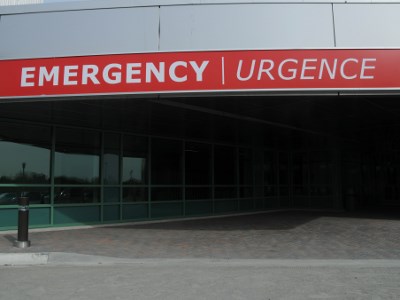Back in the spring, one of the emergency department charge nurses at Health Sciences North put on a pedometre during her 11.5-hour shift.
It turns out she walked 12.5 kilometres during that time.
Thanks to changes put in place during a process improvement program in the emergency department, hospital officials estimate that same nurse would now walk about half as far.
That’s because the layout of the emergency department has been shuffled to make it significantly more efficient.
For example, a “see-and-treat” clinic has been implemented in the emergency department, where less-sick patients are treated in a separate area.
There’s also an area for up to 10 patients who have been admitted to the hospital, but don’t yet have an in-patient bed.
Separate doctors and nurses are in charge of these areas, Jayme Watson, the emergency department’s director of continuous quality improvement, said.
She made a presentation about the subject at the health-care institution’s monthly board of directors meeting, Nov. 8.
Staff have also organized their equipment better so it’s always at their fingertips, and they don’t have to run to a different part of the emergency department to find it, she said.
For example, in the see-and-treat clinic, “items that they use all the time, like sutures, all of that is right there, so they’re able to deal with those patients in a very timely fashion,” Watson said.
The emergency department process improvement program, which started in May and ends in December, was implemented with funding from the Ministry of Health and Long-Term Care, and carried out by consultant KPMG.
“(The process improvement) really looks at two things,” Watson said.
“One is streamlining activities to be more efficient and to decrease no-value-added activities for patients (such as waiting).”
Ultimately, the program’s goal was to increase both patient and staff satisfaction, Watson said.
The recent changes in the emergency department are part of an idea called “lean management,” something Health Sciences North president and CEO Dr. Denis Roy would like to see implemented throughout the hospital.
Lean management has been used to improve efficiency in private companies such as Toyota and Domtar, and it’s now used in some health-care facilities.
Roy, along with David McNeil, the hospital’s vice-president of clinical programs and chief nursing officer, recently visited Appleton, Wisconsin-based Thedacare, a facility where lean management has reportedly saved about $25 million.
“For eight and a half years they’ve been making staff problem-solvers (at Thedacare),” Roy said.
“It’s not (the executives) that know all the answers. It’s the staff. You should have seen this. It’s beautiful.”
Not only has Henry Ford Hospital in Detroit saved about $4.4 million through the program, but also has seen a marked decrease in falls and medication errors, according to Roy.
The theory has already been partly implemented in some other parts of Health Sciences North other than the emergency department, including the medical oncology floor, he said.
Roy emphasized that lean management is not a cost-cutting measure, although improved efficiency does save money.
“Primarily, it’s a quality exercise,” he said. “When you introduce quality, it costs less.”
Roy also promises no staff would lose their jobs as a result of lean management.
Posted by Jenny Jelen
